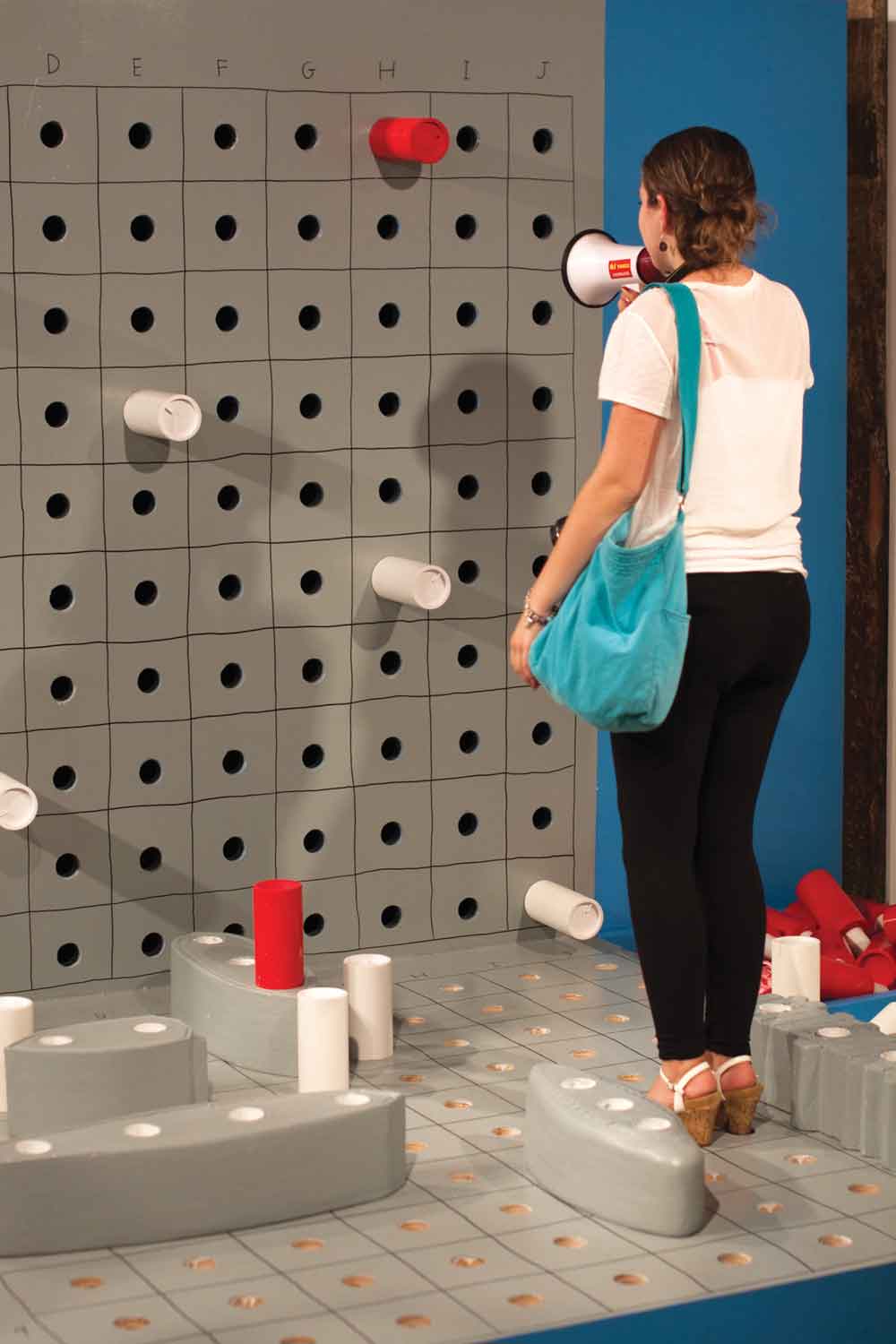« Reviews
Happy Art: Andy DuCett’s “Why We Do This”
The Soap Factory - Minneapolis
By Christina Schmid
“Why We Do This” was an ostensibly charming show. Twelve thousand square feet of former soap factory, transformed into an intricate maze of three-dimensional vignettes, beckoned with a trip down memory lane: a painted Volkswagen bus, a beer-can studded bar, a period-perfect record store, next to thrift store regalia, stacks of encyclopedias and a library of National Geographic magazines. The show catered to a playful nostalgia that invited interaction and participation. Pet the dog, smell the pizza, and get a rose and a kiss from a Fabio look-alike. An ice fishing house, wooden canoe, and a log cabin interior complete with the smell of pine, chirping birds, and an occasional view of Sasquatch through the window, affectionately located the scenes in Minnesota. At the closing party-cum-estate sale, you could even purchase your own galaxy poster, lava lamp or cat portrait. Steeped in both humor and the allure of pre-digital and relational aesthetics, “Why We Do This” was arguably the most fun people ever had at an art show in Minneapolis.
A giant Battleship set and some disproportionally large beer cans slyly alluded to the tricks memory plays on us, while an out-sized Constructo model clarified that, yes, all memories are constructed. The obsessive attention to detail was matched only by the artist-collector’s compulsion to chronicle all the decade-appropriate shapes, forms and textures. Inventory-like drawings of vacuum cleaners, lamps and side-tables connected the separate rooms and effectively marked the shifts from two to three dimensions. Besides, the drawings signaled that more than just individual memory was at stake: a whole generation’s infatuation with the past, a kind of nostalgia squared by recycling the retro chic of previous decades’ styles. That is why the show was such good fun: accessible and relatable, it affirmed a sense of belonging and identity through familiar objects and cheekily promised to answer any existentialist questions you may ever have harbored about why we do this indeed.

Andy Ducett, “Why We Do This.” Detail of Battleship installation at The Soap Factory, Minneapolis (September 8 to November 11, 2012). Photo: Dane McFarlane. Courtesy The Soap Factory.
But once we’ve had our fun and indulged in all the pleasures nostalgia has to offer, what are we left with? Empty picture frames in the living room and the melancholic make-believe of a fake canyon. “Why We Do This” may seem to celebrate the past, but ultimately DuCett’s show was very much concerned with a symptom of the present: the waxing of nostalgia coincides with a waning of optimism. The future was curiously absent from this collective fun-filled fantasy, aside from a conspiracy room, decked out for post-apocalyptic survival with a wink and a smile. As a culture, we no longer look to future actions to give us a sense of purpose and identity; we turn to the past. The resounding popular success of “Why We Do This” suggests that the future may just be too depressing for good, wholesome fun, for the kind of art that is entertaining enough to put a smile on your face.
At the far end of the elaborate installation, hidden behind Battleship players and a fragrant hotdog stand, a bubble-wrap covered corridor invited visitors to pop balloons, a whole wall of them, shiny and white. We need not wait for economic bubbles to burst, here we get to play party games with dystopian metaphors. Perhaps DuCett’s giant Battleship set should have included a model of the Titanic.
(September 8 - November 11, 2012)
Christina Schmid is a writer, teacher, editor, and critic, who lives and works in the Twin Cities. She is a regular contributor to Flash Art, and Afterimage.
Filed Under: Reviews



































Leave a Reply
You must be logged in to post a comment.